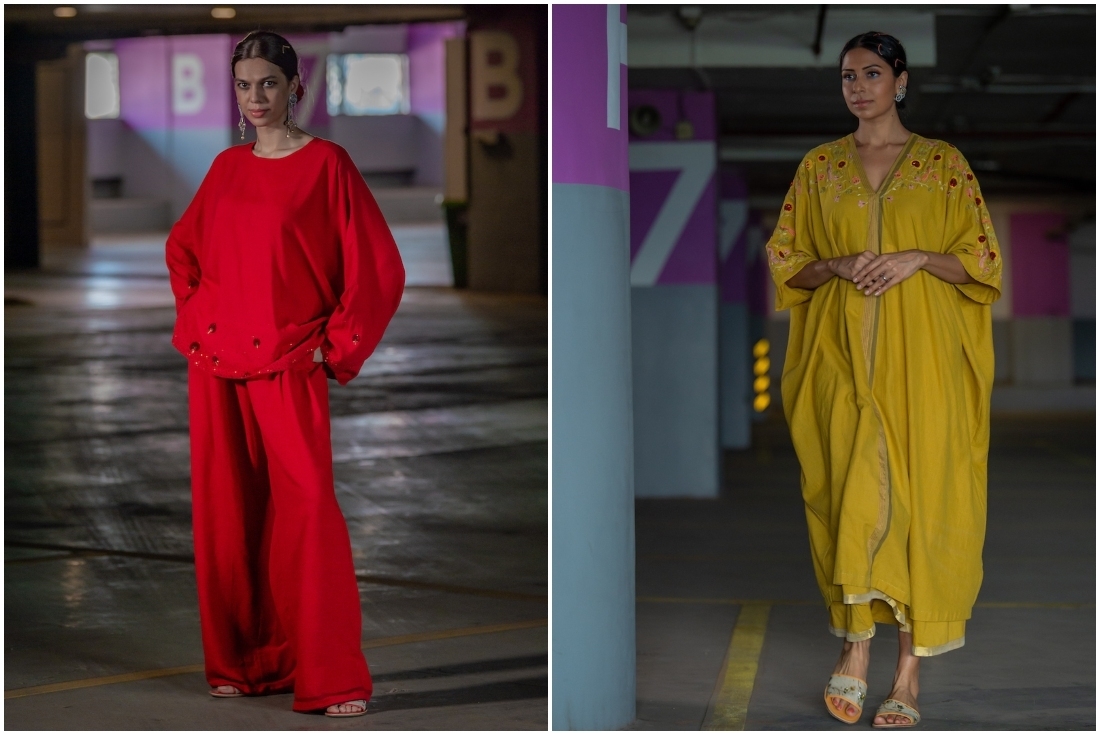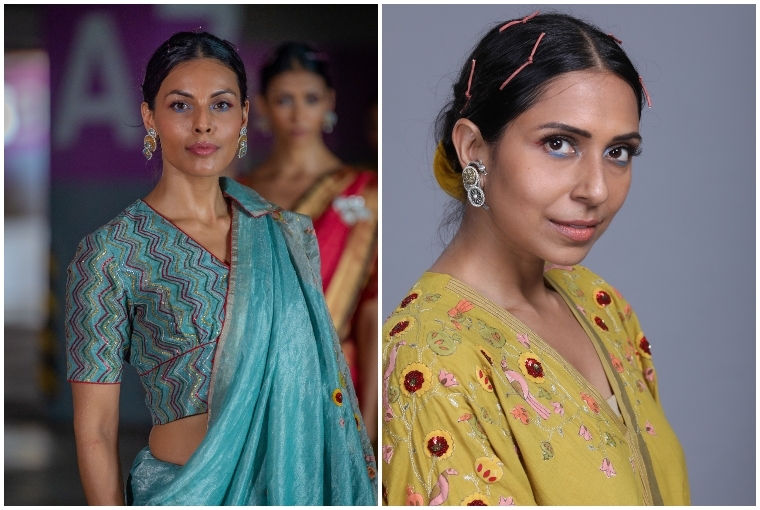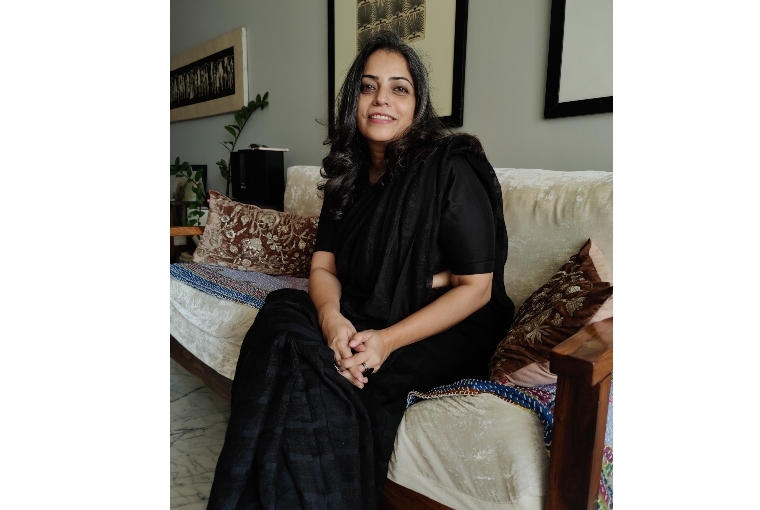

It was back in 2011 when designer Anavila Misra first began championing linen sarees, disrupting the regular flow of the embroidery laden, six-yard garment. What followed was a complete modernisation of the ancient weave, that metamorphosed it into the lightweight saris, desired by the conscious women of today. The dressmaker’s journey is intriguing because she had somehow always been surrounded by textiles and textures. She has vivid memories of her grandmother carrying around a bag that possessed all kinds of material for embroidery, crochet and sewing. She remembers her grandmother as a woman who was often found in the process of creating something beautiful. What finally paved her way towards fashion was the strong minimal aesthetic she grew up with.
Talking about her journey with her eponymous label, Anavila, she adds, ‘After a few years of corporate jobs, I began working on a cluster development project with the Ministries of rural development and textiles. The exposure to the textile belts of India, and the skill set of our weavers, pulled me and I started my work in the craft sector post my project. I always admired the texture, feel and luxury that comes with the comfort of linen. So, when I was crafting the language of my work, linen was an obvious choice. To create something new and contemporary in the sari sector and bring in comfort was what led me to work with linen in saris.’
Being deeply involved with craft clusters across West Bengal and Jharkhand, Anavila understands the symbiotic relation between a designer and an artisan. She strongly believes the relationship is an equal one. It’s only because of the artisans that designs find a more tangible form. She asserts that after working in the same clusters in a sustainable way, their artisans understand the design language in the same way as she does.
Innovation and creation at a time like this may prove difficult for many, but Anavila is persevering through the tough times. Inspired by the hands that create, the designer has found the motivation to move forward. She tells me, ‘It's the resilience of my team and the courage to move forward with hope, that has kept us going and helped us release the new collection.’ Recently released, the label’s festive collection is one close to the designer’s heart. Each hem and stitch in the garments of the collection, Dhanak, stands for the commitment and effort of the team. More importantly, these garments stand for the unfaltering hope for better days. Anavila explains, ‘We wanted to capture the spirit of Indian festivities and bring in a flash of beautiful colours and cheer. Dhanak means rainbow in Sanskrit. There is something therapeutic and intensely emotional about rainbows, and Dhanak is inspired by the same strength and light.’

Apart from releasing a new collection, the designer was also a part of the London Craft Week, which was held recently. As part of an initiative called the Create Day, Anavila presented a documentary on the craft of weaving, highlighting the artisans they work with and the processes they use, in an attempt to celebrate the ingenious work they do. ‘London Craft Week came up with a unique platform for their latest edition called The Create Day, which showcased artisans, designers and creators from all over the world. I felt overwhelmed to be a part of this showcase and represent India with my fellow designers and artisans,’ she adds.
The current moment in fashion is fluid. Fashion is going through some grave changes and the designer believes that we are headed in the right direction. She is satisfied with the awareness that is gradually percolating in the masses regarding conscious consumption. She elucidates, ‘This will definitely lead us to a more sustainable fashion landscape. Indian designers are looking at indigenous crafts and textiles with greater interest and this will only lead to sustainable collaborative communities and fashion.’
Text Unnati Saini
